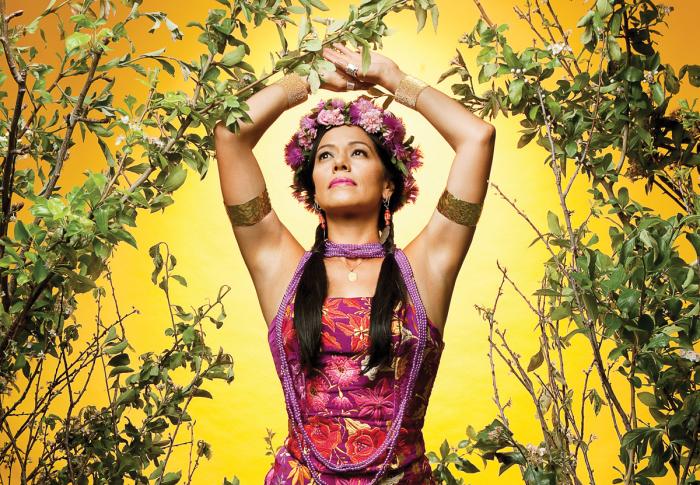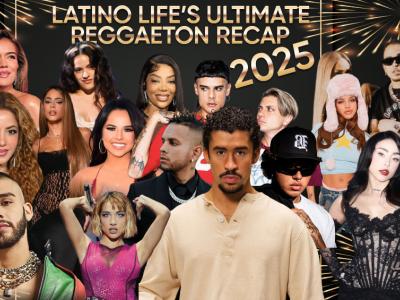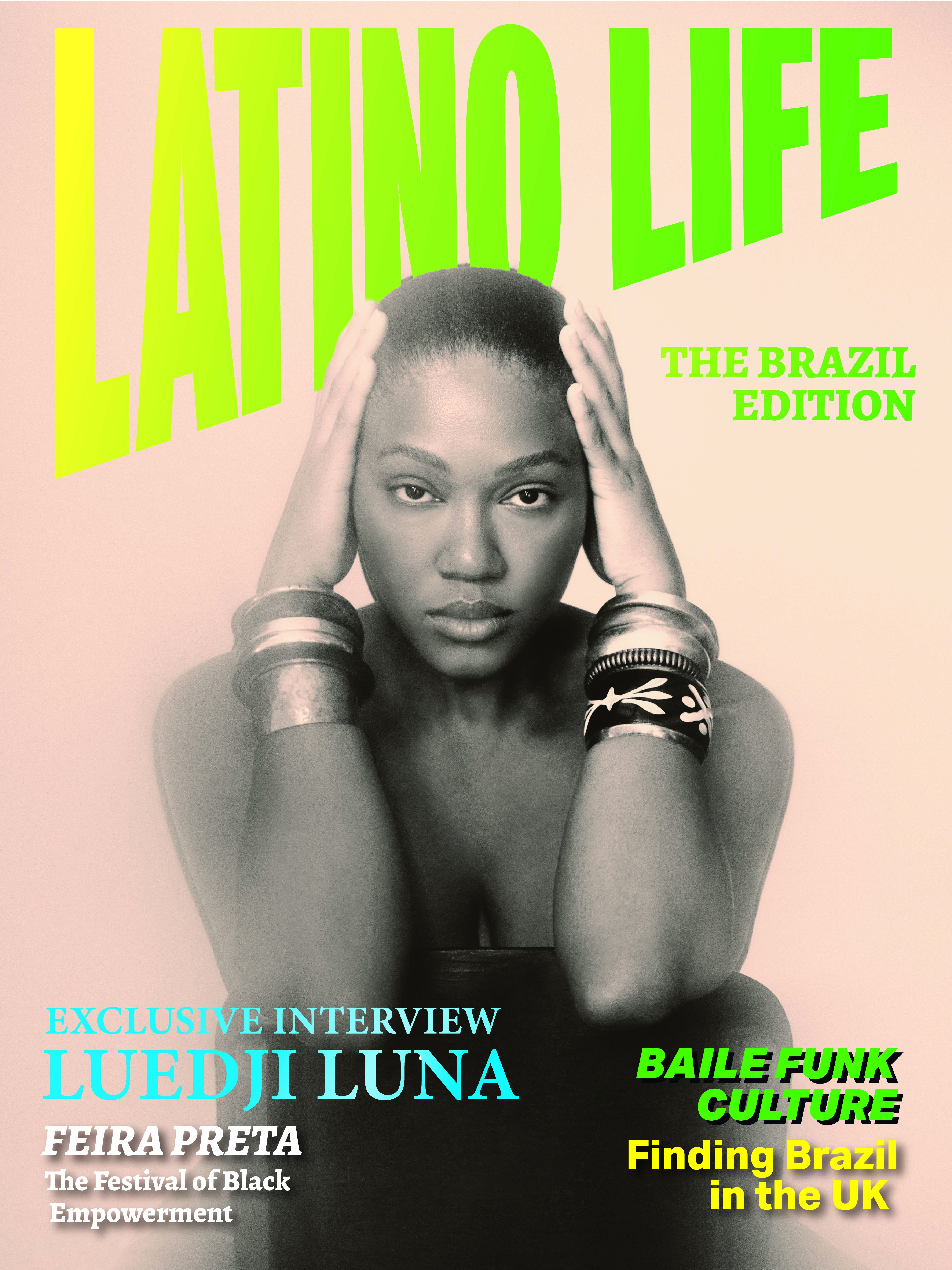"I don't think you should be singing about death anymore," Lila Downs' mother told her recently.
Downs, the Mexican/American/Scottish singer whose voice has won her legions of fans across Latin America, has been singing about La Muerte for more than two decades. And she isn't - even after a couple of closes brushes with the grim reaper - about to stop now.
"I always do the opposite of what my mother tells me," she laughs down the phone from Oaxaca, Mexico, where she grew up in a small indigenous community as the daughter of Anita, a woman from the Mixe ethnic group - who was a singer herself - and Allen, a Scottish American professor who died when Lila was a teenager.
As a child Downs moved between her parents home countries and later spent a long period in the US where she has half siblings from her father's side of the family. She enrolled at university to study textiles before embarking on a peripatetic life that continues to this day.
Tall, with long hair which she wears in traditional braids on the cover of her latest album, Downs' stage persona often sees her wearing costumes influenced by the traditional Mexican huipiles or blusas. She's a rare ambassador for the duality lived by many Mexicans who believe that the indigenous community deserves a profile beyond that of a servant in a TV telenovela.
Downs released her first album more than two decades ago but is probably best known to British audiences for the slow burning numbers she belted out for the soundtrack of Salma Hayek's biopic of painter Frida Kahlo who has in recent years become as well known as her husband, the great 20th century muralist, Diego Rivera.
Downs is another Mexican artist who has also taken a while become well known beyond Mexico and the US. Her elastic voice -ranging from a low lament that can stop you in its tracks to piercing Mariachi-like top notes - and willingness to experiment with a panopoly of musical genres in English, Spanish and several of Mexico's indigenous languages has a unique quality and, like Kahlo, Downs has had more than her fair share of close encounters with La Muerte in the past couple of years.
First Paul Cohen, her long term musical collaborator (and life partner) underwent treatment for a serious illness. Now on the road to recovery, I occasionally hear his voice in the background down the phone line to Oaxaca where the the couple are spending some time before the European leg of their current tour.
As if that wasn't enough to deal with, after Downs dedicated her Grammy to the 43 students who were disappeared by authorities in Mexico 18 moths ago (the Mexican government now claims to have proof that corrupt local police who arrested them then handed them over to a local gang - linked to a drug cartel - who killed them) she was subjected to a torrent of vicious trolling and online abuse accusing her of betraying her country by speaking out about human rights abuses.
"I felt very attacked. They said they would exert violence and I actually feared for my life."
Downs, who has never made a secret of her support for human rights causes in her home country and who has referenced a string of crusading figures including Digna Ochoa, the campaigning human rights lawyer, in her songs over the years
For Downs, Oaxaca, the magical - and troubled - southern Mexican state where she spent much of her childhood enjoying the freedom of a rural upbringing - is therefore not just a place to retreat to, it is a homecoming. And now she and Cohen, along with Benito, the young boy they adopted are enjoying life there together.
"We have been going back and forth from Mexico to the US where we had been staying with my sister but I wanted my son to have a love for and a closeness to nature.
"When I was a child, my deepest and most wonderful memories are going back to the village in Oaxaca where my mother lived, being by the river, walking between the pine trees, making things out of leaves and we've found him a place where he can do all that."
Being back in Oaxaca has also enabled the couple to lend their support to a number of community projects including Casa Rosario Castellanos, a base for young women from indigenous and mestizo communities outside the city.
Castellanos, who would have celebrated her 91st birthday this month, one of Mexico's best known women novelists and influenced several generations of feminists, not just in her native Mexico but across the Americas.
Downs pays tribute to "the amazing people" who founded the project and they work they have done with the young women who, having enjoyed the experience of being mentored themselves, are now going on to become mentors to a new intake of girls.
"We're so proud of what they have achieved and it is so gratifying that some of the girls - one of whom is now doing a PhD in ecology and sustainable development - are coming back to help ."
Collaboration is - not surprisingly - one of the keys to Downs' success. When we first spoke more than a decade ago, she was quick to credit Cohen's input - they have co-written most of the songs on her albums - as well as that of the regular group of musicians she plays with.
She has previously performed with Latin musical icons Caetano Veloso (on the Frida soundtrack, Burn it Blue) and the late Mercedes Sosa whose breathy, heart stoppingly low register is not unlike Downs' . Some critics believe Downs to be the natural heiress to Sosa whose anthems sustained a generation during the years of the Guerra Sucia or the Dirty War which cast its shadow over Argentina, Chile and many other countries across Latin America.
Downs has also recorded with Latino guitar hero Carlos Santana and British musician Jamie Catto who describes Downs as "true music royalty".
He recalls "working with Lila was such a luxury. We recorded in her mother’s home in Mexico and also out in the countryside - the music composed itself effortlessly and her playful yet diligent approach to creating the songs was a pleasure to experience. The tracks we created, especially Solita Sin Solidad (with Santana) speak for themselves."
Her latest album, Balas y Chocolate ( Bullets and Chocolate) has a very different feel to her previous albums, not least because it is almost entirely in Spanish ( she has previously sung in English as well as Zapotec and Nahuatl, two of the more than 50 indigenous languages spoken in Mexico) and is heavily influenced by Cumbia as well as music from the north of Mexico.
On Balas she has a couple of duets ; 'La farsante' with Mexican vocalist Juan Gabriel and La patria madrina with Colombian star Juanes, whose biggest hit from 2006, 'Camisa Negra' has become an anthem in its own right.
La patria madrina deals with the forced disappearances of the 43 Mexican students from Ayotzinapa. "Of course we have a right to remember," she says indignantly when I ask her how she feels about the fact that the families of the missing youngsters had reportedly been told by the Mexican authorities that they should give up their quest for the truth and move on with their lives.
At one point in the song Downs calls out the slogan the families have adopted for their campaign, "they took them alive, we want them back alive."
Her favourite track, Humito de copal, references the smoke from the burning of copal, a natural resin used in ceremonies by Native Americans. "It is very resonant for me, she explains, "as the smoke is seen as the road for the spirits to come."
So much has changed in Mexico since her career began she muses, as she explains that she and Cohen are simultaneously planning what must surely be - aside from bringing up a child across three cultures - their most ambitious project to date; having renegotiated her deal with her record label, they are about to embark on a three album epic. "Creating a story of Latin America, which is something I have wanted to do for a long time," she explains.
As both a guardian of tradition and an innovator there are few artists better placed to take on such a challenge. No doubt the spirits will be watching.

















